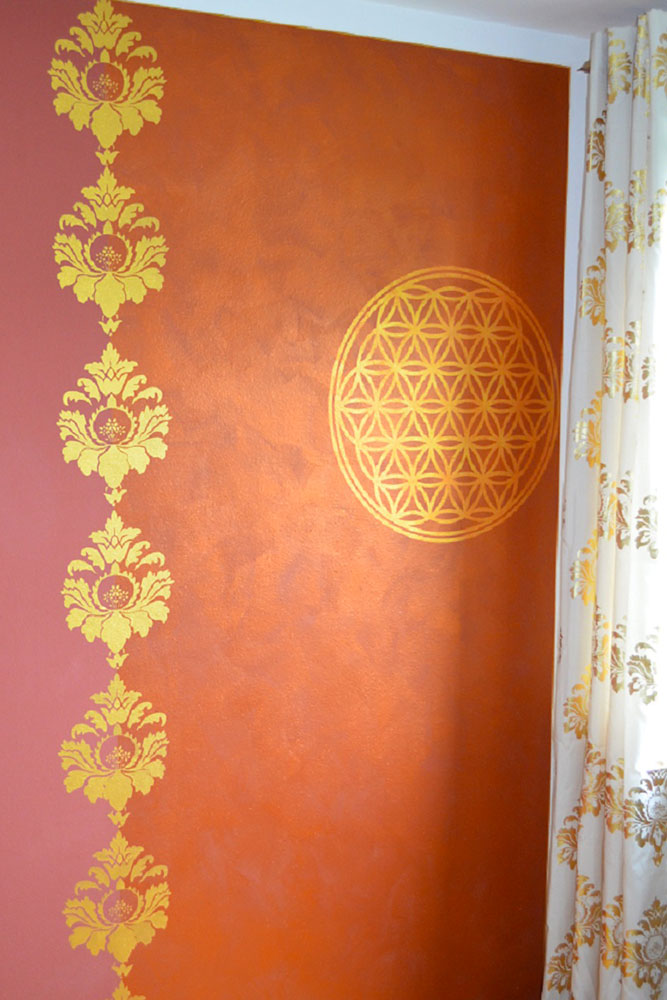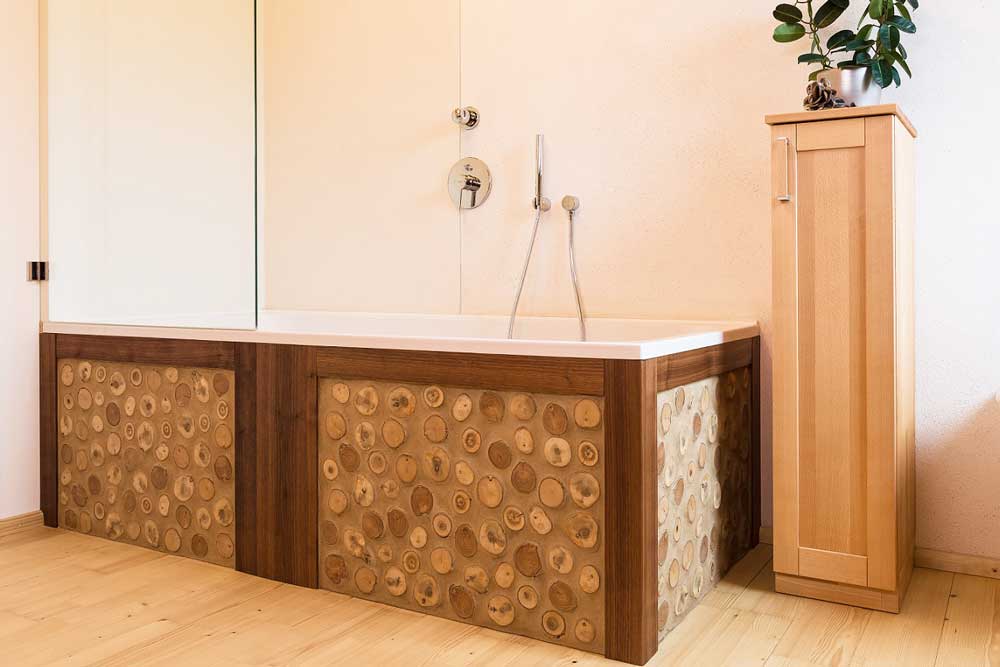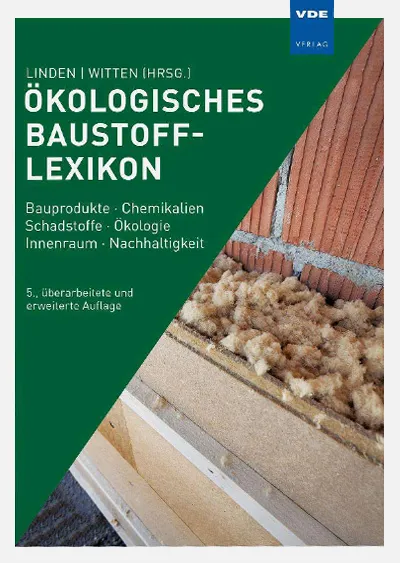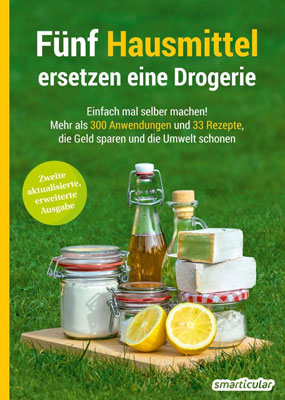Designing with natural paints and plasters
Handcrafted production
As the saying goes, „The proof is in the pudding!“ In our painting business, we have experimented with various methods to develop solutions that align with our clients‘ goals. This gives the word „craft“ back its original meaning. You can incorporate new additives, metal pigments, or natural materials, such as flowers or leaves, into a design. Nature offers many color suggestions and combinations.
The possibilities for designs with lime paint or clay plasters are endless! Being environmentally friendly doesn’t mean being brown and monotonous! There are many great design options for decorating a room, apartment, or home according to one’s personal taste. Poems, ornaments, and custom stencils can also help.

For example, the pattern from the curtain was transferred onto the wall in gold leaf using a stencil, as was the "flower of life."
The embellished "flower of life" ornament is the icing on the cake in this clay plaster design.
The bathtub apron is made of clay plaster and various wooden discs framed with oiled walnut wood.1 For example, the pattern from the curtain was transferred onto the wall in gold leaf using a stencil, as was the „flower of life.“2 The embellished „flower of life“ ornament is the icing on the cake in this clay plaster design.3 The bathtub apron is made of clay plaster and various wooden discs framed with oiled walnut wood.
Natural paint and plaster manufacturers
Manufacturers of natural paints and plasters offer a wide range of finishes for decorative and modern design applications. You can create countless beautiful variations by mixing and matching different colors and additives, such as straw, mica, granite, dill, husks, sisal, and seashells.
Make your own
Why not just do it yourself? That way, you’ll know exactly what you’re getting! Making your own paint is easy. See the info box for an example. In addition to finished products, some natural paint manufacturers offer individual ingredients, such as pigments and borax. You can find suitable recipes in some books (see the book recommendation at the end for more information). Many craftspeople are also willing to help you, give you tips, supply the necessary ingredients, or lend you tools. Taking walks in nature is a good way to find new design ideas and suitable natural materials.

Here is a recipe for making your own milk paint, also known as casein paint:
- 75% pigments
- 24% low-fat cottage cheese (quark)
- 1% borax, soda, or potash
- Mix the pigments with water to form a thick paste.
- Dissolve the borax in hot water, then mix it well with the cottage cheese.
- Let both mixtures rest for two hours.
- Combine the mixtures, and you’re ready to go!
Tip: A good paint job consists of two thin coats rather than one thick coat.
Book recommendation
Julia Lawless and Lynn Edwards: The Natural Paint Book: A Complete Guide to Natural Paint, Recipes, and Finishes. Rodale Press, 2003.
This is a translation of “Gestalten mit Naturfarben und Naturputzen “
Translator
Katharina Gustavs is a Building Biology Professional in Victoria, Canada, who translated the Building Biology Online Course IBN.
info@katharinaconsulting.com | katharinaconsulting.com
Ihre Stimme zählt
Kommentarregeln:
Wir sind neugierig, was Sie zu sagen haben. Hier ist Raum für Ihre Meinung, Erfahrung, Stellungnahme oder ergänzende Informationen. Bitte beachten Sie bei Ihrem Kommentar folgende Regeln:
- Bitte keine Fragen: Auf dieser kostenlosen Informationsplattform können wir keine Fragen beantworten - bitte stellen Sie Ihre Fragen direkt an unsere Autor*innenAutor*innen.
- Bitte keine Werbung: Gerne können Sie auf Ihre Produkte/Dienstleistungen mit einem Werbebanner aufmerksam machen.

Wie werde ich
Baubiolog*in IBN?

How to become a Building Biology Consultant IBN?
Nachhaltig weiterbilden
Know-how, Zusatzqualifikationen und neue berufliche Möglichkeiten für Baufachleute sowie alle, die sich für gesundes, nachhaltiges Bauen und Wohnen interessieren.
Unser Kompetenz-Netzwerk
Hier finden Sie unsere qualifizierten Baubiologischen Beratungsstellen und Kontakte im In- und Ausland nach Standort und Themen sortiert.
Über die Baubiologie
Die Baubiologie beschäftigt sich mit der Beziehung zwischen Menschen und ihrer gebauten Umwelt. Wie wirken sich Gebäude, Baustoffe und Architektur auf Mensch und Natur aus? Dabei werden ganzheitlich gesundheitliche, nachhaltige und gestalterische Aspekte betrachtet.
25 Leitlinien
Für einen schnellen, aufschlussreichen Überblick haben wir in 25 Leitlinien der Baubiologie die wichtigsten Parameter herausgearbeitet, sortiert und zusammengefasst. In 15 Sprachen, als PDF oder als Plakat erhältlich.




0 Kommentare